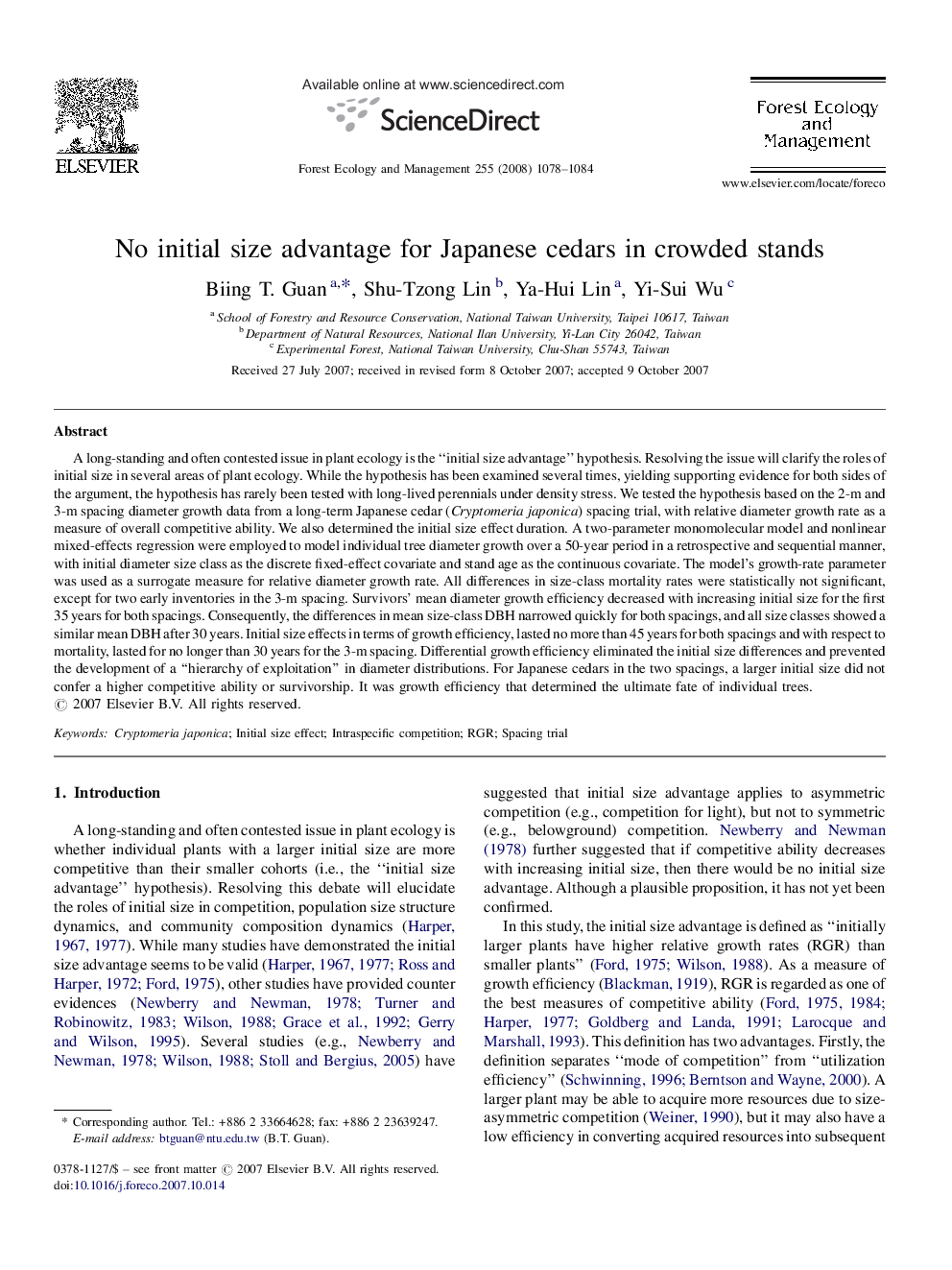| Article ID | Journal | Published Year | Pages | File Type |
|---|---|---|---|---|
| 89886 | Forest Ecology and Management | 2008 | 7 Pages |
Abstract
A long-standing and often contested issue in plant ecology is the “initial size advantage” hypothesis. Resolving the issue will clarify the roles of initial size in several areas of plant ecology. While the hypothesis has been examined several times, yielding supporting evidence for both sides of the argument, the hypothesis has rarely been tested with long-lived perennials under density stress. We tested the hypothesis based on the 2-m and 3-m spacing diameter growth data from a long-term Japanese cedar (Cryptomeria japonica) spacing trial, with relative diameter growth rate as a measure of overall competitive ability. We also determined the initial size effect duration. A two-parameter monomolecular model and nonlinear mixed-effects regression were employed to model individual tree diameter growth over a 50-year period in a retrospective and sequential manner, with initial diameter size class as the discrete fixed-effect covariate and stand age as the continuous covariate. The model's growth-rate parameter was used as a surrogate measure for relative diameter growth rate. All differences in size-class mortality rates were statistically not significant, except for two early inventories in the 3-m spacing. Survivors' mean diameter growth efficiency decreased with increasing initial size for the first 35 years for both spacings. Consequently, the differences in mean size-class DBH narrowed quickly for both spacings, and all size classes showed a similar mean DBH after 30 years. Initial size effects in terms of growth efficiency, lasted no more than 45 years for both spacings and with respect to mortality, lasted for no longer than 30 years for the 3-m spacing. Differential growth efficiency eliminated the initial size differences and prevented the development of a “hierarchy of exploitation” in diameter distributions. For Japanese cedars in the two spacings, a larger initial size did not confer a higher competitive ability or survivorship. It was growth efficiency that determined the ultimate fate of individual trees.
Related Topics
Life Sciences
Agricultural and Biological Sciences
Ecology, Evolution, Behavior and Systematics
Authors
Biing T. Guan, Shu-Tzong Lin, Ya-Hui Lin, Yi-Sui Wu,
